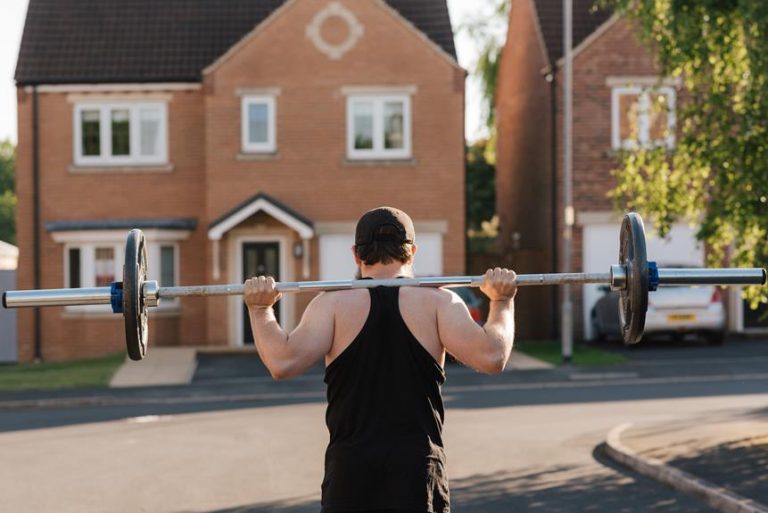9 Best Tips for Perfecting Squat Form
Are you looking to perfect your squat form? Look no further! In this article, we will provide you with nine invaluable tips to help you achieve just that.
From proper foot positioning and hip mobility to core engagement and breathing techniques, we've got you covered.
We will also discuss common mistakes to avoid, progression and overload, assistance exercises, and the importance of recovery and rest days.
Get ready to take your squat game to the next level!
Key Takeaways
- Proper squat form ensures maximum muscle activation.
- Correct technique reduces the risk of injury.
- Maintaining proper alignment improves overall balance and stability.
- Squatting with correct form enhances overall athletic performance.
Foot Positioning
For proper squat form, position your feet shoulder-width apart and slightly turned out. This ensures balance, stability, and even weight distribution, preventing strain on your joints.
Slight foot turnout improves ankle mobility, allowing for proper depth and a more upright torso position.
Pay attention to foot positioning for a successful squat.
Hip Mobility
To improve your squat form and prevent injuries, focus on improving hip mobility.
Incorporate hip circles, pigeon pose, and deep squat holds into your routine. These exercises increase flexibility, stretch muscles, and enhance mobility and stability.
Regularly performing these exercises can improve hip mobility, allowing for better squat form and reducing the risk of injuries.
Remember to warm up properly and listen to your body to avoid overstretching or straining muscles.
Core Engagement
Enhance squat form and reduce injury risk by incorporating core engagement.
Tips:
- Brace your abs by taking a deep breath and tightening your muscles.
- Activate the transverse abdominis by pulling your belly button towards your spine.
- Maintain proper posture with a lifted chest, back shoulders, and neutral spine.
- Control your descent and maintain core tension.
These techniques improve form and reduce injury risk.
Breathing Technique
Proper breathing techniques are crucial for optimizing squat form and enhancing performance.
Two effective techniques to incorporate are diaphragmatic breathing and the Valsalva maneuver.
Diaphragmatic breathing involves deep inhalation through the nose and forceful exhalation through the mouth while engaging the abdominal muscles.
The Valsalva maneuver entails taking a deep breath and holding it during the squat movement.
Implementing these techniques can improve stability, activate the core, and maximize overall squat performance.
Neutral Spine Alignment
Maintaining a neutral spine alignment during squats is crucial for proper form, preventing injuries, and maximizing performance. It ensures spinal stability and promotes good posture. Proper muscle activation and injury prevention are also benefits of maintaining neutral spine alignment.
Prioritizing spinal alignment in squats optimizes performance, reduces injury risk, and yields better results.
Knee Tracking
Maintain proper knee tracking during squats for knee stability and injury prevention. Align your knees with your toes, avoiding inward collapse or outward drift. This distributes forces evenly, reducing strain and injury risk.
Engage hip muscles, stabilize core, center weight over heels, and push knees slightly out as you squat.
Prioritize knee alignment for optimal form and knee protection.
Depth of Squat
To achieve proper squat depth, aim to lower your hips below parallel. This will increase muscle activation, improve mobility, and enhance overall strength and power.
Follow these tips to improve your squat depth:
1) Work on hip mobility through exercises like hip flexor stretches and deep squat holds.
2) Strengthen your glutes and hamstrings to maintain proper form and go deeper into the squat.
3) Start with lighter weights to focus on technique, gradually increasing the weight as your depth improves.
4) Engage your core for stability and support during the squat.
Implementing these strategies will help you achieve a deeper squat, maximizing benefits and enhancing performance.
Barbell Placement
Proper barbell placement is crucial for successful squats. To ensure the right position, rest the barbell on your upper traps, just below the base of your neck. Grip it tightly for control and stability, and keep your elbows down and slightly back to create a shelf.
This helps distribute the weight evenly, prevents strain on your lower back, and maintains balance and stability while preventing injuries.
Grip and Hand Positioning
For optimal control and stability during squats, it's important to have a firm grip and evenly position your hands on the barbell. Use an overhand grip slightly wider than shoulder-width apart with palms facing away from you to prevent the bar from rolling. Squeezing the bar tightly activates upper body muscles and improves stability.
Invest in squat-specific footwear for a stable base and better grip on the floor. To improve grip strength, incorporate exercises like farmer's walks, deadlifts, and wrist curls into your routine.
Warm-Up Exercises
To prepare for squats, it's important to do warm-up exercises like dynamic stretching and mobility drills.
Dynamic stretching involves moving your joints through a full range of motion to increase flexibility and blood flow. Leg swings, hip circles, and walking lunges are examples of dynamic stretches for squats.
Mobility drills focus on improving specific areas of mobility that may be limiting your squat technique, such as ankles, hips, and thoracic spine.
These warm-up exercises will help you improve your squat form and prevent injury, ultimately optimizing your performance.
Squat Variations
Try different squat variations to target specific muscle groups and enhance your workout. Incorporating these variations can challenge your body in new ways and prevent plateauing.
Here are four to try:
1) Sumo Squat: This variation targets the inner thighs and glutes.
2) Bulgarian Split Squat: This variation targets the quads and glutes, while also improving balance.
3) Pistol Squat: This challenging variation targets the core, glutes, and quads, while also testing balance and flexibility.
4) Goblet Squat: This variation helps improve form and targets the quads, glutes, and core.
Common Mistakes to Avoid
To ensure proper squat form, avoid these common mistakes:
- wearing improper footwear
- uneven weight distribution
- leaning too far forward or backward
- lack of stability and support
- straining the lower back or knees.
Choose shoes with a flat and non-compressible sole, like weightlifting or cross-training shoes, to provide stability and prevent slipping.
Distribute your weight evenly between your heels and the balls of your feet throughout the movement to maintain balance and prevent injuries.
Progression and Overload
To improve your squat form and avoid mistakes, focus on progression and overload. Increase weight gradually.
Try different squat variations. Increase volume. Use weightlifting equipment.
These techniques will help your muscles adapt and grow stronger over time, maximizing the benefits of your squat workouts.
Assistance Exercises for Squats
Enhance your squat performance and gains with targeted assistance exercises.
Use squat accessories like resistance bands or chains to improve strength and stability.
Incorporate mobility exercises such as hip flexor stretches, calf stretches, and ankle mobility drills for better squat mechanics.
Include these exercises in your training program to take your squat to the next level.
Recovery and Rest Days
Rest and recovery are crucial for optimizing squat performance. After intense workouts, muscles need time to repair and rebuild. Incorporating recovery and rest days into your routine has four key benefits:
- Muscle repair
- Injury prevention
- Improved performance
- Mental refreshment
These techniques are essential for maximizing squat performance and achieving fitness goals.
Frequently Asked Questions
How Can I Prevent My Knees From Caving Inwards During a Squat?
To prevent your knees from caving inwards during a squat, focus on exercises that strengthen your glutes and hips, such as hip thrusts and clamshells. Utilize techniques like spreading the floor with your feet and engaging your core for stability.
What Are Some Exercises to Improve Ankle Mobility for Better Squat Form?
To improve ankle mobility for better squat form, try these exercises and techniques. Incorporate calf raises, ankle circles, and heel-to-toe walks into your routine. These will help increase flexibility and stability in your ankles, allowing for a more effective squat.
Should I Use a Weightlifting Belt While Squatting?
Using a weightlifting belt while squatting can provide support and stability for your core. However, it's not necessary for everyone. Strengthening your core muscles and practicing proper form are alternative ways to improve your squat.
How Long Should I Rest Between Squatting Sessions to Allow for Proper Recovery?
To allow for proper recovery and maximize muscle activation, rest time between squatting sessions should typically be around 48-72 hours. Breathing techniques play a crucial role in optimizing squat performance and maintaining proper form.
Can Squatting Help Improve My Running Performance?
Squatting can greatly benefit your running performance. By strengthening your lower body muscles, improving stability and power, and enhancing your overall endurance, squats can help you become a better runner.


